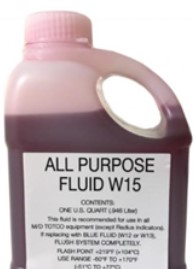
Flame Detection & Flame Simulators Calibration
FGD Fire and Gas Detection Technologies provides advanced flame detectors and flame simulators for fast and reliable detection of various types of fires, including visible, non-visible, and hydrocarbon fires. Crowcon also offers the Crowcon FGard IR3 Flame detector.
The calibration process for these detectors involves gathering necessary equipment, including calibration gas cylinders, regulators, and adapters specific to your detector model. Ensure you are in a well-ventilated area and wear appropriate personal protective equipment. Perform initial checks on the gas detector and ensure it is clean and free from dust or debris. Perform zero calibration to establish baseline readings in an atmosphere free of toxic or combustible gases. Use a known concentration of gas to adjust the detector's response to ensure accurate detection of target gases within specific operating parameters.
For fixed gas detectors, gather the necessary equipment, such as calibration gas cylinders, regulators, and adapters, and ensure you are in a well-ventilated area and wearing appropriate personal protective equipment. Perform initial checks on the gas detector and allow it to warm up. Perform zero calibration to establish baseline readings in an atmosphere free of flames. Use a known flame source to adjust the detector's response to ensure accurate detection of flames within specific operating parameters.
Flame detectors and flame simulators are crucial for ensuring their proper function and reliability. Gather the necessary equipment, including calibration gas cylinders, regulators, and adapters specific to your detector model. Ensure you are in a well-ventilated area and wear appropriate personal protective equipment. Perform initial checks on the flame detector and ensure it is clean and free from dust or debris. Perform zero calibration to establish baseline readings in an atmosphere free of flames.
Flame simulator calibration involves ensuring the flame simulator is fully charged and in good working condition. Perform initial checks on the simulator and attach it to the detector using the appropriate adapters. Run calibration tests on the detector and allow the flame simulator to emit the appropriate radiation for the specified duration. Finally, verify the calibration results on the detector's display screen.




